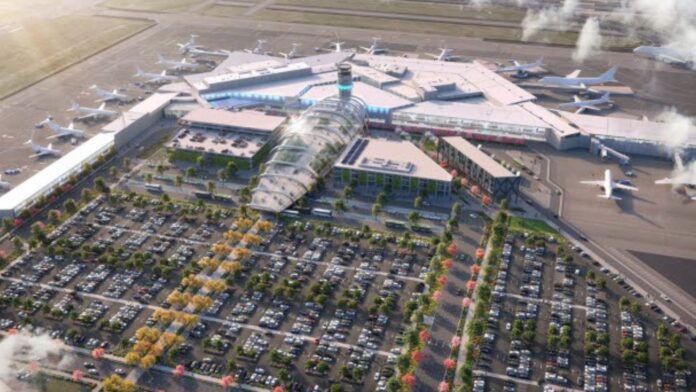
Kowhai Park, Christchurch Airport’s renewable energy zone, has moved a significant step closer to reality with the largest solar farm to be developed.
After a year-long process that drew interest from organisations worldwide, the airport has picked Contact Energy and Lightsource bp as its partners to deliver phase one of the park.
The initial stage of the park will consist of a 300-hectare solar farm on property directly behind the airport’s runways.
Lightsource bp’s workforce comprises over 1,000 industry experts across 19 geographical areas. Contact Energy and Lightsource bp formed an exclusive cooperation in April 2022 to co-develop grid-scale solar projects in New Zealand.
Kowhai Park is intended to be the first of several proposed solar farms in New Zealand for the Lightsource bp and Contact Energy partnership.
According to Christchurch Airport CEO Justin Watson, this represents a significant milestone for Kowhai Park, an essential project for Canterbury and New Zealand.
“Kowhai Park will enable low-emissions aviation and help provide the extra green energy New Zealand needs to transition away from fossil fuels. We’re excited to have found partners with the technical capability to do this well and the values to ensure it’s done right,” Watson said.
Lightsource bp stated that Kowhai Park’s solar farm would be among the largest in New Zealand, with over 300,000 solar panels.
In due course, the park will be home to environmentally friendly hydrogen production and be able to supply energy to large energy consumers like data centres and vertical farms.
The 150MW (or 170MWp) array is estimated to generate 290 GWh per year. This is equivalent to converting nearly 36,000 homes or half of Christchurch’s domestic flights to low-emission technologies annually.
According to Lightsource bp, it will have the same carbon benefit as planting 1.25 million native trees and bushes.
Contact Energy CEO Mike Fuge expresses his excitement about the development partnership.
“We’ve committed to creating up to 380,000-megawatt hours of grid-scale solar generation by 2026, this project will deliver over half of that. We’re bringing our proven track record of delivering domestic renewable projects in order to meet the massive anticipated demand for renewable electricity in New Zealand. Subject to a final investment decision, all going well construction will begin in 2024,” Fuge said.
Fuge stated that they are excited to work together on Kowhai Park Christchurch Airport to meet its environmental goals and fulfil its commitment to lead New Zealand’s decarbonisation.
Lightsource bp’s Managing Director for Australia and New Zealand Adam Pegg said he’s as excited.
“We’re delighted to launch our first project in New Zealand and to be partnering with organisations who, like us, want to play a leading role in New Zealand’s decarbonisation,” Pegg stated.
Pegg added that Lightsource bp has a strong international track record of successfully executing utility-scale solar projects, and the company looks forward to working closely with Christchurch Airport on the development, construction, and management of Kowhai Park with Contact Energy.
According to Lightsource bp, the project has received widespread support throughout Canterbury.
Orion Group CEO Nigel Barbour said the company is thrilled to be able to support the project as the central Canterbury power lines company.
Environment Canterbury chair Peter Scott added he’s thrilled that 159 hectares of land leased to Christchurch Airport will become part of Kowhai Park.
“Many people don’t realise that Environment Canterbury is a significant land owner – it’s exciting to see some of that land being used in an innovative way to provide a large-scale source of renewable energy. This project will make a big difference to Canterbury’s efforts to decarbonise,” Scott said.
Watson claimed that Kowhai Park would be ready to assist in the decarbonisation of flights.
“Our goal is to ensure K?whai Park is ready to provide the large amount of green energy these new aircraft will need. This starts with the solar farm but will include green hydrogen generation down the track,” Watson added.




















